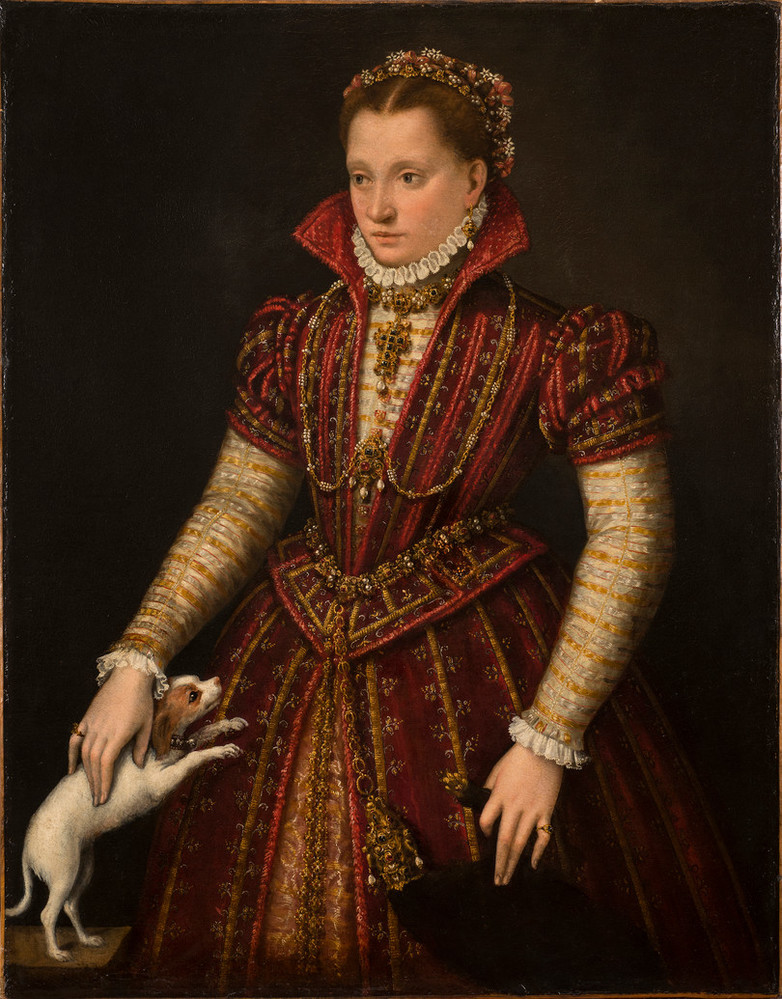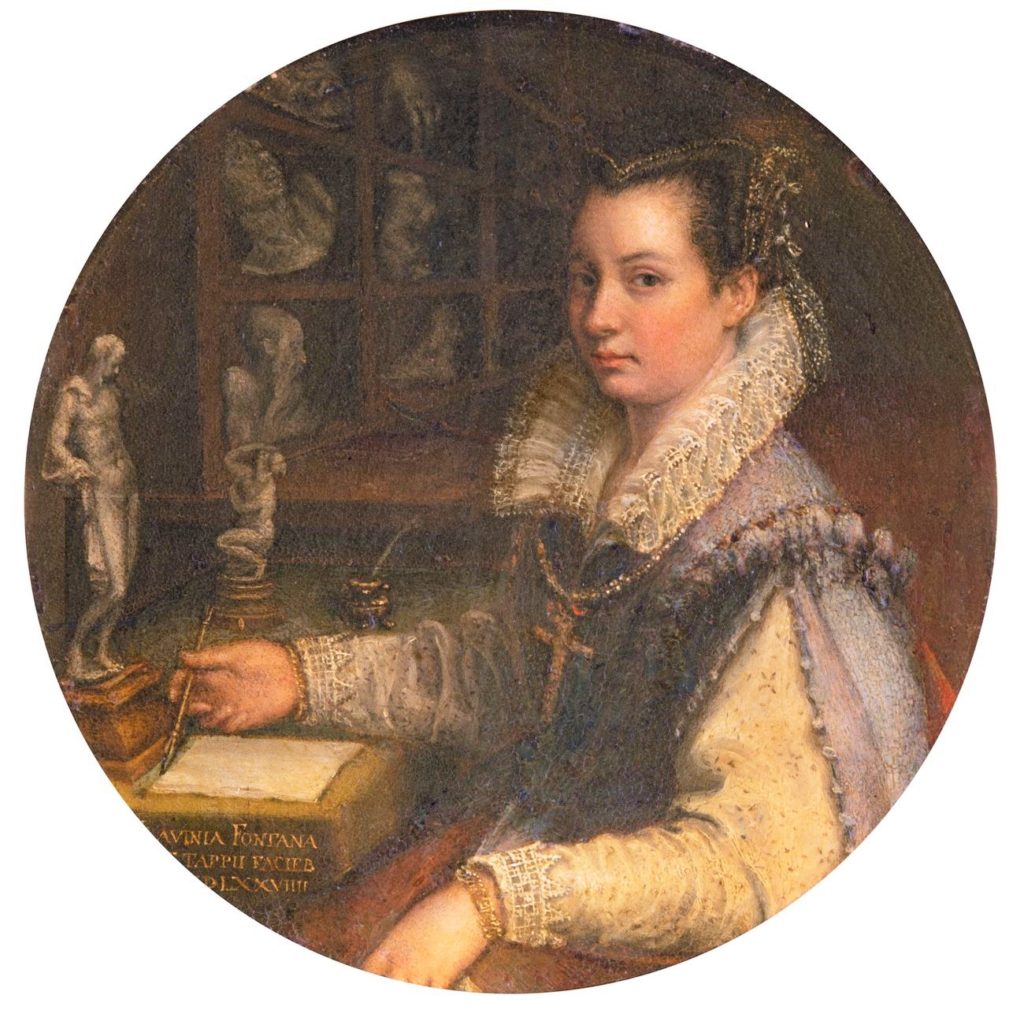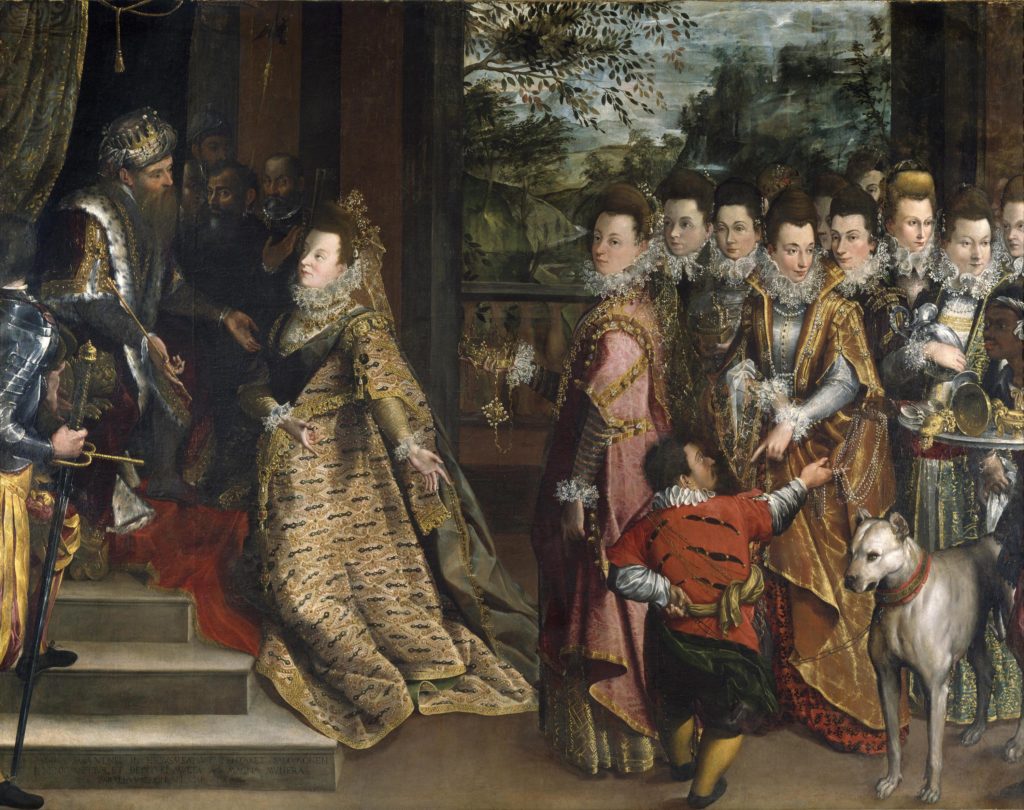By: Emma Stuart
The Renaissance was a time of rebirth in Western art, culture, politics, and the economy. There were many things changing at that time and one of the most notable things being art. When most people think about Renaissance-era artists a few select names come to mind: Michelangelo, Leonardo da Vinci, Raphael, Caravaggio, and Jan van Eyck, to name a few. These are all phenomenal artists who changed thescope of the art world forever. However, there is a name that is often left out of this list.
That name is Lavinia Fontana. She is considered to be the very first working female artist. She was born in Bologna Italy in 1552 to a family of prestigious painters. Her father, Prospero Fontana was a teacher at the School of Bologna which was an important art school at the time. Her artistic talent was nurtured by her father from an early age. This great talent served her very well in life, and when she desired to be married her skills were used as a sort-of dowry. She was married to an amateur artist and merchant who greatly regarded her skills.
The two went on to have a happy/successful marriage with 11 children. She continued to work on her craft even as a mother and her career excelled. In a very scandalous change from the status quo of the Renaissance era, Lavinia was the breadwinner for her family and her husband worked as her studio assistant. Lavinia was one of the original female powerhouses of the art world, she was able to pave the way for some of the other female artists that we know and love. As her work continued to excel and her career to soar, she gained a very prestigious list of patrons. These patrons include Italian Cardinal Gabriele Paleotti, Spanish Cardinal Francisco Pacheco, The King of Spain Phillip II, and many members of the nobility across Europe.

Her specialty was portraiture and was highly sought after by female nobles in Italy as she was able to capture the splendor of their dress alongside their dogs, who they wished to be included in the portraits. This type of portraiture showed a juxtaposition of the stiff attire of the noblewoman and the playfulness of an excited puppy.

Another one of her great accomplishments was breaking into the boy’s club scene of church painters. She was commissioned to paint an altar piece for the new cathedral dedicated to Saint Hyacinth of Poland. She was able to leave her mark in one of the oldest and most highly venerated churches in Rome. Lavinia was making waves in the art community in more ways than one. She was also known for being the first woman to paint a female nude in the history of art.
This magnificent story of hers is often untold because she was not supposed to have succeeded in the boy’s club that was the Renaissance art scene, but against all odds she pursued her dreams and make a sizeable impact on the world of art. She was able to have a star-studded career and also have a family who encouraged her work. Lavinia Fontana was a magnificent woman, artist, and mother and her story deserves to be heard.

